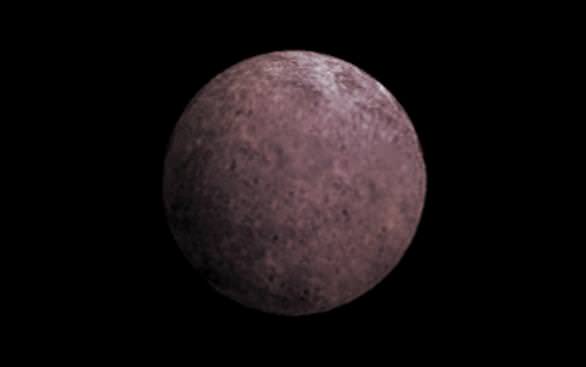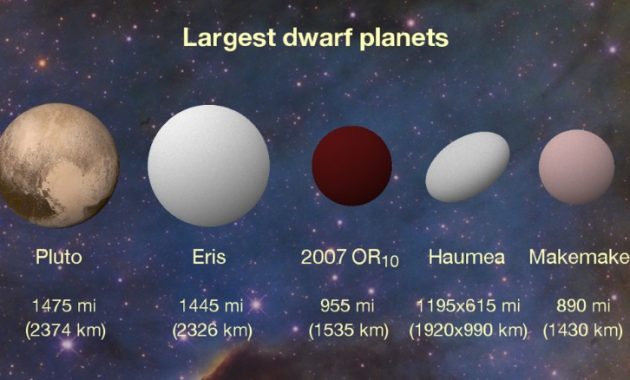225088 Gonggong (2007 OR10) discovered on January 8, 2005 by Michael Brown and his team thanks to the 1.26 m telescope of Mount Palomar, it is also a dwarf planet. In fact it is a very small body of 2326 KM in diameter, only slightly smaller than Pluto (2370 KM).
If officially Eris is considered a dwarf planet like Pluto and Ceres, by their composition and their characteristics Pluto and Eris belong to the great family of objects of the Kuiper Belt, the KBO, a huge disk of frozen debris that extends to at around 500 AU from the orbit of Neptune.
Eris orbits at a distance that varies between 5.8 and 14.5 billion kilometers from the Sun, twice as far as Pluto. At this distance, the Sun must appear as a pinhead. Its surface is the coldest of the solar system, with a temperature that does not exceed -243 °C!
Eris completes a complete tour around the Sun in 577 years! It is today in the constellation of the Whale. Too small and too far away, it is invisible in an amateur telescope because its magnitude is about +19 only.
Another peculiarity, like Pluto or Sedna, Eris turns around the Sun in a very elongated and inclined orbit, like that of comets and stars of the KBO family. In addition, on September 10, 2005 astronomers discovered that Eris had a satellite they called Dysnomia. This moon is 7 times smaller than Eris and is about 325 km in diameter.
Finally, in addition to the dwarf planets Pluto, Eris, Charon and Ceres, there is “2007 OR10” nicknamed “Snow White” because of the white color of its surface. This dwarf planet is about 1535 km in diameter and gravitates into a very elongated orbit and inclined beyond Sedna as we see below.


hi
test